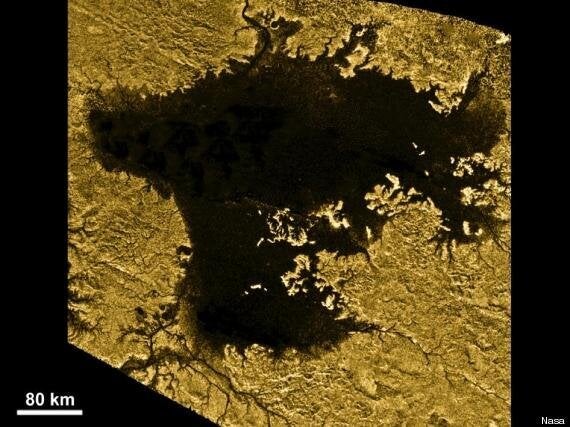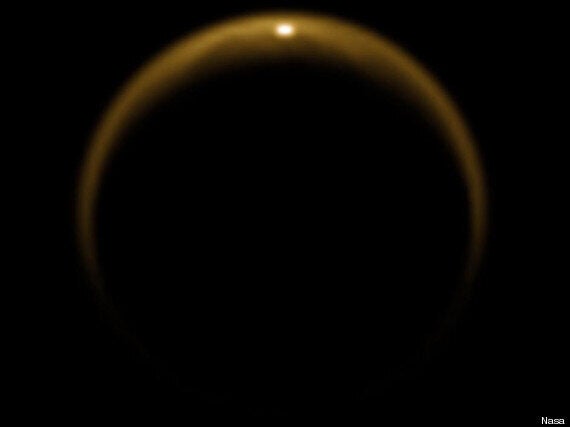Think our spring weather is bad?
Nasa says it's also spring on Saturn's moon Titan - and by comparison a bit of hail and drizzle is nothing.
The seasons take about seven years to change on Saturn's largest moon. The strange alien world was dark when Nasa's Cassini spacecraft arrived in 2004, but the sun has now crossed Titan's equatorial plane at equinox, and the northern hemisphere of the moon is starting to warm up.

Above: Ligeia Mare, shown here in data obtained by NASA's Cassini spacecraft, is the second largest known body of liquid on Saturn's moon Titan.
The result? Hurricanes, waves on lakes of liquid hydrocarbons and other tremendously intense things which are very interesting as long as you're not actually on Titan.
The space agency is predicting the Spring could bring increased winds, causing waves that will ripple across the moon's lakes of liquid hydrocarbons.
If conditions are right, and there is the right mixture of methane in the lakes, tropical storms or cyclones could also develop, with winds up to 70 km/hour.
Which would probably mess up any plans you had to fly over the world's surface - which due to the low gravity and thick atmosphere, you could actually do.

Above: light glinting off a lake on the surface of Titan
That's added to the normal frigid temperatures of the surface, which are usually as low as minus 179 degrees C.
Scientists think that in some respects, conditions on Titan are similar to those of the early Earth, albeit much colder since it is so far from the Sun. The planet is covered in dunes made of hydrocarbons, rocks and ice of frozen water and clouds of methane, which occasionally burst into rain.